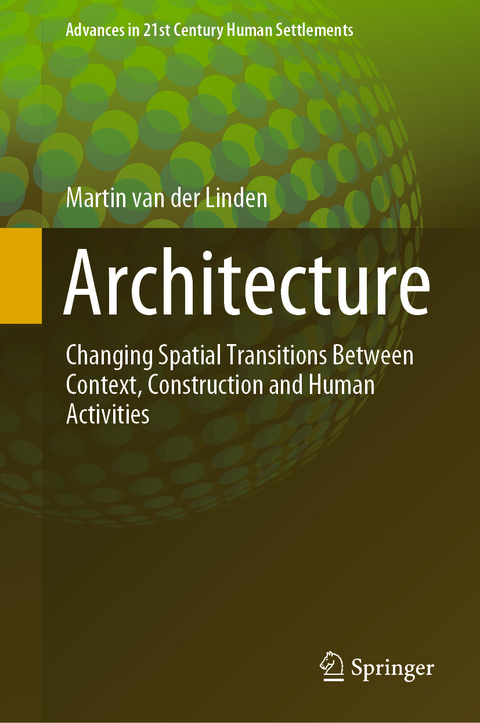
Architecture
Springer Verlag, Singapore
978-981-334-657-4 (ISBN)
The question of what architecture is answered in this book with one sentence: Architecture is space created for human activities. The basic need to find food and water places these activities within a larger spatial field. Humans have learned and found ways to adjust to the various contextual difficulties that they faced as they roamed the earth. Thus rather than adapting, humans have always tried to change the context to their activities. Humanity has looked at the context not merely as a limitation, but rather as a spatial situation filled with opportunities that allows, through intellectual interaction, to change these limitations. Thus humanity has created within the world their own contextual bubble that firmly stands against the larger context it is set in. The key notion of the book is that architecture is space carved out of and against the context and that this process is deterministic.
Martin van der Linden is a Dutch architect living in Japan for 10 years. He studied architecture in the Netherlands (Maastricht University), London (Southbank University) and Japan (Tokyo University). A recognised professional in the field, he has published numerous articles on architecture and design. His academic background includes lecturing positions at Tokyo’s Waseda University and Tokyo University of Science. His professional experience includes working for the renowned Japanese architect Hiroshi Hara on the Kyoto station and the Osaka Umeda Sky Tower. From 1995 to 1996, he worked for Cesar Pelli’s Tokyo office at the Museum of Modern Art in Osaka. From 1996 to 1999, he was a design consultant to the architectural office of the Japanese Ministry of Education. Martin worked on the master planning of Japanese universities and other educational as well as governmental buildings. He established van der Architects in 2001.
Introduction.- Spatial desire.- The world is islands.- Of pyramids and fire.- Useless architecture.- Chicago.- Universal architecture domination pact.- Transitional space.- Context welcome.- The house as a container for the unconscious.- Zero-time space, the end of architecture.
| Erscheinungsdatum | 19.03.2021 |
|---|---|
| Reihe/Serie | Advances in 21st Century Human Settlements |
| Zusatzinfo | 68 Illustrations, black and white; XXVII, 272 p. 68 illus. |
| Verlagsort | Singapore |
| Sprache | englisch |
| Maße | 155 x 235 mm |
| Themenwelt | Naturwissenschaften ► Geowissenschaften ► Geografie / Kartografie |
| Technik ► Architektur | |
| Technik ► Bauwesen | |
| Weitere Fachgebiete ► Handwerk | |
| Schlagworte | architectural space • Constructed space • Construction Techniques • Human activites • Maslow's pyramid • Perception of Space • transitional space |
| ISBN-10 | 981-334-657-4 / 9813346574 |
| ISBN-13 | 978-981-334-657-4 / 9789813346574 |
| Zustand | Neuware |
| Informationen gemäß Produktsicherheitsverordnung (GPSR) | |
| Haben Sie eine Frage zum Produkt? |
aus dem Bereich


